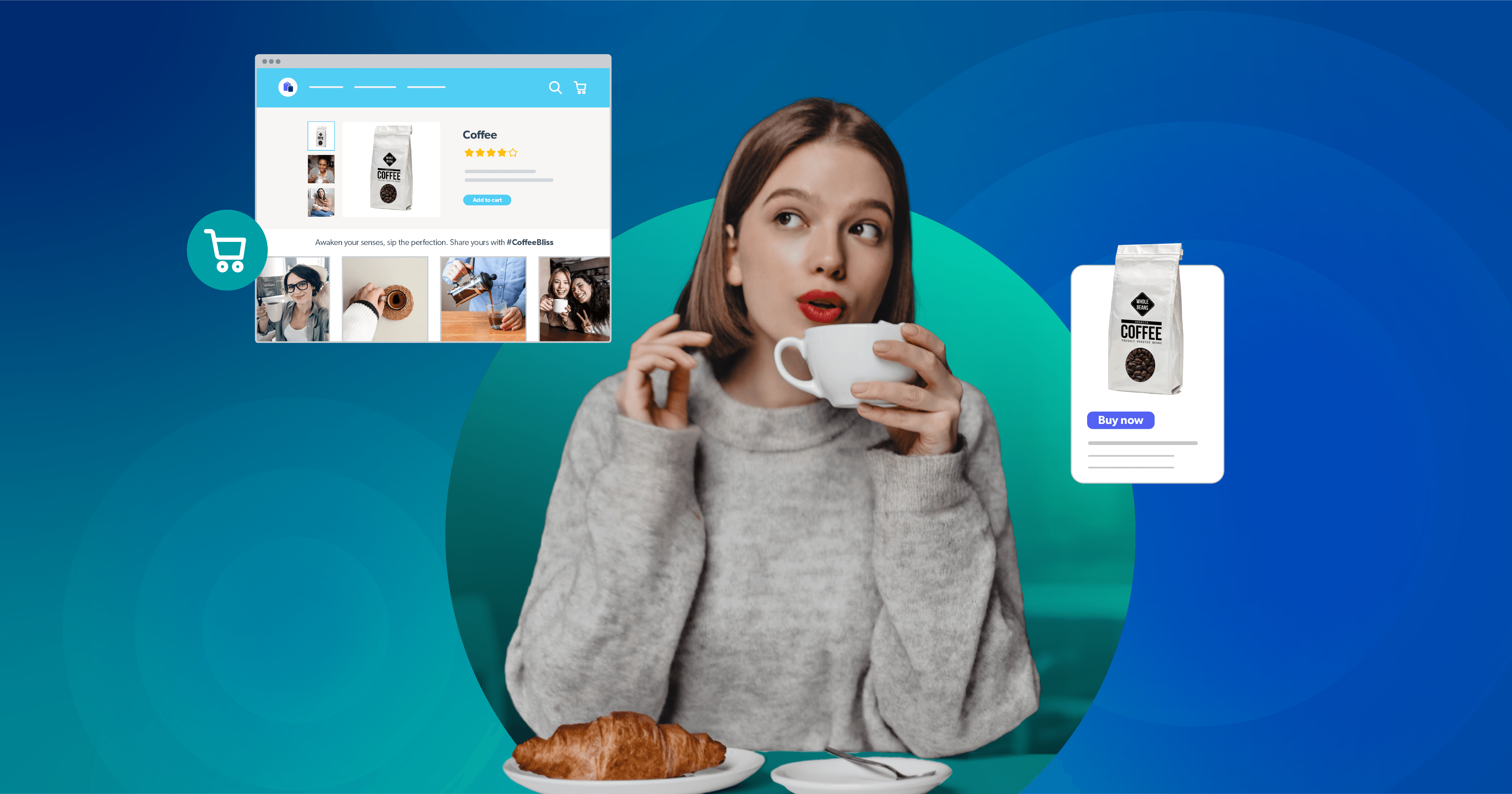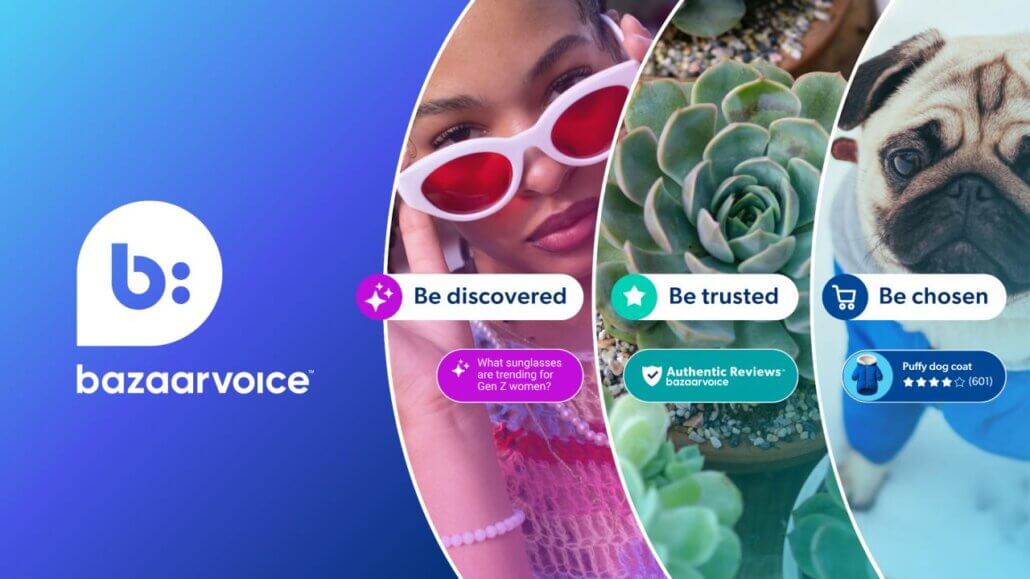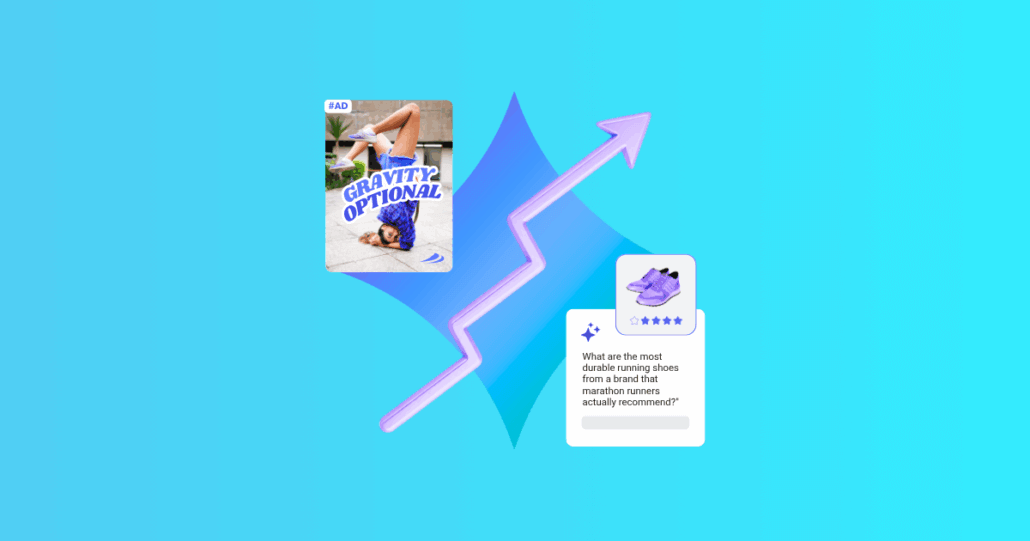October 6, 2025
Stop thinking of your content as just a human conversation. Today, every product detail page is essentially a job interview with two very different audiences: the skeptical shopper and the hyper-efficient AI shopping agent. As algorithms filter, rank, and recommend products, the content that cuts through the noise needs to be both genuinely authentic for humans and perfectly structured for machines.
Bazaarvoice’s Global Consumer Behavior Report highlights factors like review recency, UGC authenticity, and private-label quality directly impact buying behavior. And the next evolution is content that resonates across two audiences: the shopper and AI agents.
Here are seven content types that do both:
1. Structured reviews with recency & volume
When reviews go stale, both shoppers and algorithms disengage.
- For shoppers: Recency matters. Nearly half (48%) of consumers say they weigh how recent reviews are before buying. Old reviews feel irrelevant; shoppers want consumer trust signals rooted in “what’s happening now.”
- For AI agents: Fresh timestamps and schema markup (AggregateRating, ReviewDate) are strong ranking signals. AI agents prioritize listings with high-volume, recent, authentic reviews.
Fast fact: A higher total number of reviews is important to 79% of consumers when choosing one product over another.
2. Visual UGC: Photos & videos that show real use
Shoppers trust peers over ads, and AI agents reward content that is both machine-readable and visually authentic.
- For shoppers: User photos and video customer testimonials outperform studio images because they prove real-life fit, feel, and performance. Bazaarvoice data shows shoppers rate photos (19%) and usage comments (17%) as especially useful.
- For AI agents: Metadata like alt text, captions, and context (“wearing size M” or “before/after”) help multimodal models interpret and elevate products in results.
Fast fact: Over 46% of consumers say short-form video content impacts their buying choices.
3. Authenticity signals & balanced reviews
Balanced, transparent UGC both reassures shoppers and gives machines the context they need to trust your content.
- For shoppers: What makes reviews untrustworthy? Over-polished text, only five-star ratings, or repetitive phrasing. Gen Z in particular demands transparency, including negative reviews, as a key UGC authenticity indicator.
- For AI agents: Algorithms learn to discount suspicious patterns (too positive, repetitive). “Verified Buyer” badges, mixed ratings, and detailed narratives reinforce credibility.
Fast fact: Over two-thirds (66%) of consumers would have confidence in a clear “trust signal” (like a symbol or a checkmark) for content authenticity.
4. Q&A and specific, answer-ready content
Q&A is the bridge between uncertainty and conversion, serving both humans and agents looking for semantic clarity.
- For shoppers: They want clear answers: Does it run true to size? How long is battery life? A strong Q&A section eliminates hesitation and supports consumer buying behavior.
- For AI agents: Well-structured FAQs and conversational snippets feed directly into LLM-driven shopping assistants. AI pulls these as ready-to-serve responses in chat and search.
Fast fact: Websites that increased session depth by 10% or more saw conversion rates jump by 5.4%, demonstrating how deeper engagement (like that driven by Q&A) pays off.
5. Cross-channel social proof
Shoppers don’t trust siloed content; neither do machines.
- For shoppers: UGC on TikTok, Instagram, and retailer sites builds social media purchasing confidence. Bazaarvoice’s Shopper Preference Report 2025 notes 1 in 3 consumers act on creator content across social channels.
- For AI agents: Cross-platform consistency of messaging and product claims builds “authority signals” in AI ranking models. Agents reward brands with unified UGC ecosystems.
Fast fact: UGC such as reviews or customer photos and videos can increase conversion rates by 31% and revenue per visit by 45%.
6. Private label content that proves quality + value
Winning consumer brand switching requires proof of value, not just lower cost.
- For shoppers: Why do consumers buy private label? Price is a major driver, but private label quality improvements are changing perceptions. Nearly 40% cite improved quality as a reason for private label adoption, shifting loyalty away from national brands.
- For AI agents: Comparative data, structured attributes (durability, ingredients, sustainability), and UGC stories provide agents with “reason codes” to recommend private-label over branded equivalents.
Fast fact: By leveraging UGC and sampling for store brand products, one retailer saw a 48% increase in revenue for those items.
7. Fresh, multi-format content ecosystems
Stale content loses both trust and algorithmic weight.
- For shoppers: Shoppers perceive static content as outdated. Frequent updates and multi-format content (reviews, visuals, videos) feel relevant and engaging.
- For AI agents: Recency and diversity of content formats strengthen ranking signals. AI agents surface products with the most “current” and “contextually rich” ecosystems.
Fast fact: Retailers who implement immersive video galleries on product pages have seen a 261% lift in conversion rate when shoppers engaged with the content.
For 2025 and beyond, the strategic imperative is clear: content must persuade people with authenticity, trust, and relevance, while also being structured enough for AI agents to surface and recommend. Whether it’s private label adoption, UGC trust, or video testimonials, content is now the decisive driver of consumer buying behavior and AI-enabled product visibility.





